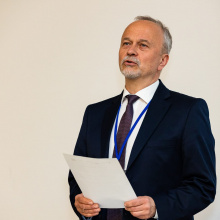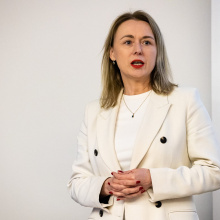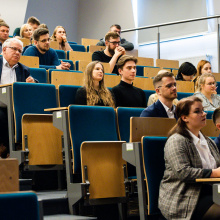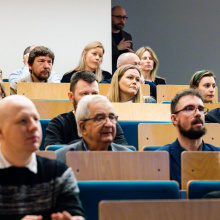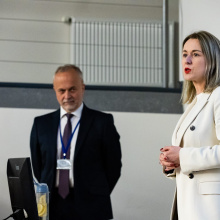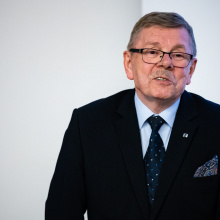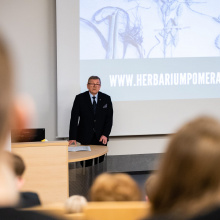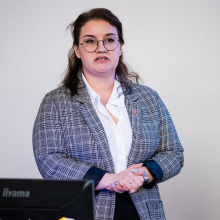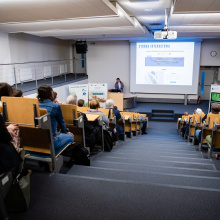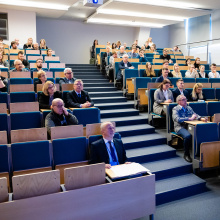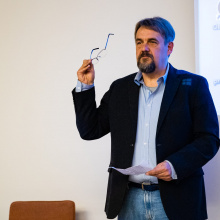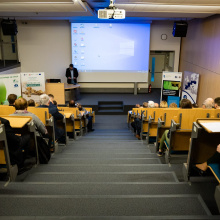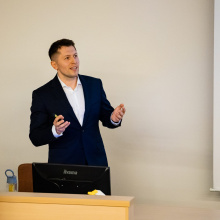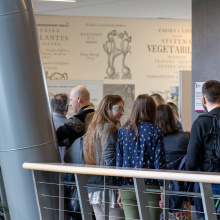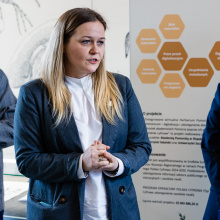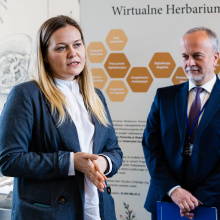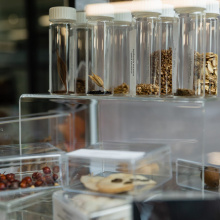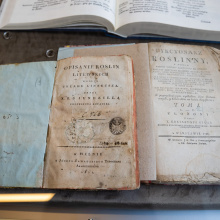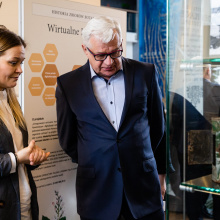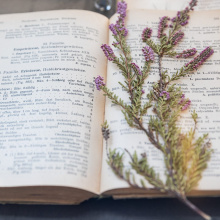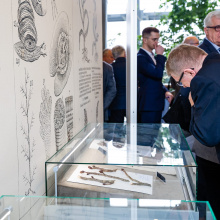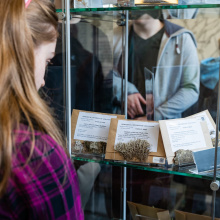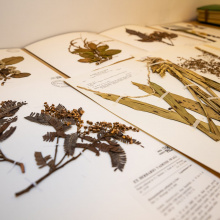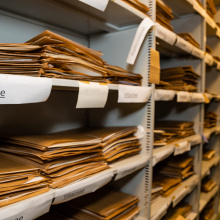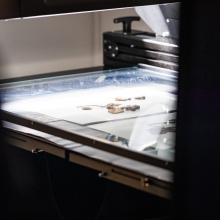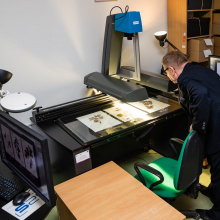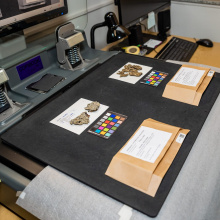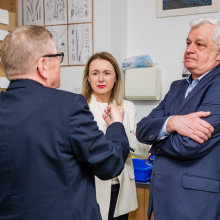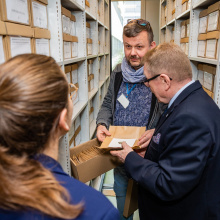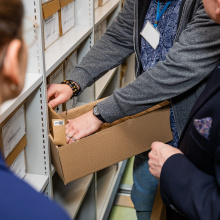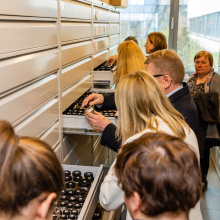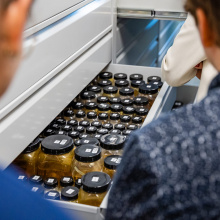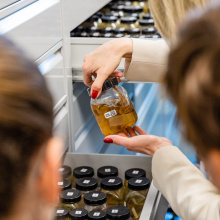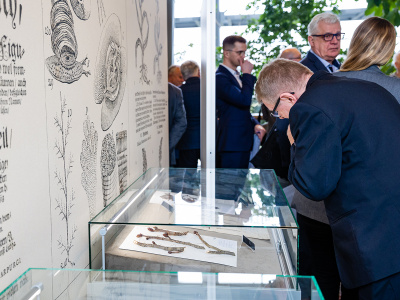
How have people collected, created and used botanical collections over the centuries? What were the origins of species nomenclature? The answers to these and many other questions can be found at the newly opened UG Faculty of Biology exhibition entitled 'History of Botanical Collections'. You are welcome to take a tour.
The ceremonial opening of the exhibition 'History of the Botanical Collections' took place on April 14 at 12.00 at the Faculty of Biology UG.
The assembled guests were welcomed by prof. dr hab. Dariusz L. Szlachetko, Dean of the Faculty of Biology, UG, and dr hab. Sylwia Mrozowska, prof. UG, Vice-Rector for Cooperation and Development, University of Gdańsk.
- 'The exhibition we are about to see will take us on an interesting journey, from which we will learn how, over the centuries, people have collected, created and used botanical collections - from the oldest herbaria to contemporary databases containing information about the collections and their scans. The exhibition results from a project financed by the Digital Poland Operational Programme entitled Herbarium Pomeranicum - digitising and making available the herbarium collections of Pomeranian academic institutions by combining them and making them digitally accessible,' - said prof. dr hab. Dariusz L. Szlachetko.
- 'It is a great joy to see the results of often difficult and complex projects. This project is special not only because of its subject matter but also because of the social impact it can bring. Digitisation offers great opportunities; it removes boundaries. As a result, the numerous collections made available will be available for everyone to use, both for scientific and cognitive purposes. I would like to thank everyone who took part in this project. I am convinced that many people will use the collections and visit the herbarium website,' – said dr hab. Sylwia Mrozowska, prof. UG.
Other guests also spoke: mgr Marta Jarosińska talked about the 'Integrated Virtual Herbarium Pomeranicum', dr Jarosław Nowakowski presented the topic of 'IMBIO - Integration and mobilisation of data on the biotic diversity of Eukaryota in the resources of Polish scientific institutions', and dr Sławomir Nowak talked about 'Herbaria and digitisation of natural history collections worldwide'.
After the speeches, it was time for the event's main point- the exhibition's opening and viewing, located on the 1st floor of the UG Faculty of Biology. How is it conceived, and what do we learn from it?
- 'The showcases contain exhibits presenting the historical collection, covering the early use and significance of plants for humans and the first research into their medicinal properties, among other things. We will learn here, for example, how a globally unified scientific nomenclature of organisms was created, and that grouping organisms into hierarchical systems was also an element of human interest, which was undertaken, among others, by Karol Linnaeus,' – says mgr Katarzyna Wszałek-Rożek, curator of the herbarium from the Geobotany and Nature Conservation Laboratory of the University of Gdańsk. - 'Part of the exhibition is devoted to contemporary collections, their diversity, types of scientific collections and possibilities for their use. In addition, one of the showcases contains an exposition presenting what a plant material has to go through from the moment it is collected in the field to becoming an allegate in a scientific collection, i.e. how to collect the material, preserve it, how to label it correctly and record data about the location and collector. We will also learn what procedure is required to describe a taxon that is new to science.'
The exhibition is a part of the project entitled 'Herbarium Pomeranicum - digitisation and accessibility of herbarium collections of Pomeranian academic units through their combination and digital accessibility', implemented within the framework of the Operational Programme Digital Poland 2014-2020. Total project value: PLN 25,065,886.20, with European funding under POPC amounting to PLN 21,213,259.49 gross.
Let us recall that the Virtual Pomerania Herbarium combines the resources collected by four Pomeranian herbaria. In this way, the virtual collection, which includes almost half a million specimens of plants and fungi, described and classified according to specific criteria, can be accessed by anyone interested. The project was carried out in a partnership of three Pomeranian universities: University of Gdańsk, Pomeranian Academy in Słupsk and Szczecin University.


